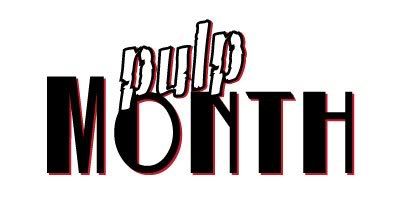
Tarzan has been part of cinema almost as long as cinema has existed. In 1918, the first two Tarzan silent films were released, Tarzan of the Apes and The Romance of Tarzan, both starring Elmo Lincoln. But it wasn’t until the talkies and a man named Johnny Weismuller that Tarzan became a household name in film as well as in print.
From 1932 to 1960, Weismuller, Lex Barker, and Gordon Scott made a sum total of 23 Tarzan films with 5 more independent films being produced in the same time period. Six more smaller films from RKO and other studios kept the hero alive for most of the sixties. But in the seventies, Tarzan disappeared from the silver screen. The disco decade gave us only one glimpse of Tarzan, the Filmation cartoon series on Saturday mornings.
That changed in 1981 as a new era of very different Tarzan movies began with Tarzan, the Ape Man. The film took a decidedly different direction as it focused more on James Parker and his daughter Jane, played by Bo Derek. Tarzan (Miles O’Keeffe) almost becomes a supporting character in his own film. (Even the movie poster featured only Jane.) Derek as Jane is clearly center stage, not surprising when her husband John Derek is directing. But the film seems more ready to focus on showing Jane topless for as long as times as possible rather than constructing a good story. If you like skin, you will surely enjoy this film, but if you are looking for solid Tarzan action you are best advised to go elsewhere. Not Recommended.
Three years later, Hollywood would try again with Greystoke — The Legend of Tarzan, Lord of the Jungle. The movie finally does away with many of the tropes of previous films, from the rather idiotic Tarzan of the Weismuller era, while going back to the original material for more of its story ideas. Still it takes massive liberties with the relationship of Tarzan and Jane. While Christopher Lambert (Highlander) and Andie MacDowell bring solid performances to their roles, they often fall flat against a script buried in eighties cinema seriousness. Nowhere will you find the excitement and the fun spirit of Burroughs’ Tarzan. Ralph Richardson does perform admirably as Tarzan’s aging grandfather, but it is not enough to save the film from its own sagging spirit. Mildly Recommended.
It would be another fourteen year gap before Tarzan returned to the screen with Tarzan and the Lost City. The film takes the complete opposite concept from Greystoke. This is a rollicking action adventure with shades of the Indiana Jones franchise thrown in. The Lost City in the title is none other than the city of Opar, though it does not resemble the city of Burroughs’s original works. Casper Van Dien (Starship Troopers) portrays Tarzan, while model Jane March brings a certain almost foreign mystique to her role as Jane. The movie isn’t particularly well acted, but it is a fun adventure romp. Mildly Recommended.
Tarzan’s cinema life may have come to an end with the release of Disney’s animated Tarzan in 1999. The film traces the life of a young Tarzan in his tribe as he grows to adulthood and makes friends of the animals around him. As an adult he meets Jane, her father, an eccentric professor, and their guide Clayton (a far cry from the Clayton of the novel). But the film does a good job of capturing the spirit of Burroughs’s character while still taking the usual movie liberties with the story. The move does an artful job of weaving its disparate elements together. Yes, the music by Phil Collins can often be off-putting, but the film works as a whole. Though not as powerful as many of Disney’s animated films in the nineties, Tarzan is clearly one of the best screen adaptations of Tarzan ever. Recommended.
Though Tarzan has returned in a cartoon series based on the Disney film and a short-lived WB series, he has yet to return to film. But it seems like only a matter of time before John Clayton, Lord Greystoke, finds his way back to film. Hopefully with a film that makes all his previous forays on to the silver screen pale in comparison.

No comments:
Post a Comment